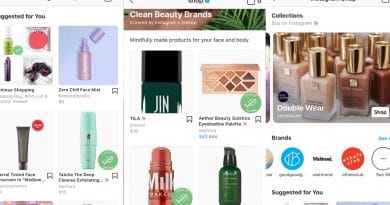What Is Fast Fashion? | The Week Ahead, BoF Professional
FAST FASHION IS ALL RELATIVE
-
Zara owner Inditex reports quarterly results on June 9
-
The fast-fashion giant’s online sales soared during the pandemic, but overall sales fell last year due to stores closures in many countries
-
A new wave of even faster-fashion e-commerce players are on the rise, led by Shein
Is Zara fast fashion? It’s a silly question when looking at Gap, J.Crew, Express and countless other retailers that were left in the dust by Inditex’s speedy supply chain. But compared to Boohoo or FashionNova, the answer is less clear. Next to Shein and a bevy of other even newer, faster e-tailers, Zara starts to look a bit sluggish. When online retailers churn out hundreds of algorithm-determined styles daily, Zara’s ability to translate runway looks to merchandise in a few weeks seems almost quaint. Zara isn’t Gap in this scenario, but it’s not winning the race, either.
Nor is it trying to. As fast fashion grows ever more flimsy and disposable, Zara is now practically aspirational. They may sell inexpensive copies of trending styles, but those pieces are designed with a little more intention, priced a little higher, and made a little better than the typical Shein or FashionNova offering. “In terms of quality, we are closer to Zara than Shein,” one executive at a new fast fashion start-up recently told BoF. Comments like that illustrate why Zara hasn’t been overwhelmed by faster and cheaper competitors: the Sheins of the world may have perfected fast fashion’s mechanics, but to enough consumers, quality still matters. Or at least, it used to; Inditex’s results should give an indication of whether that’s still the case.
The Bottom Line: Changing attitudes toward sustainability could render the quest for ever-faster fashion moot. For now, many consumers seem unconcerned about the waste and environmental degradation that are the inevitable byproduct of producing mass quantities of cheap clothing. But in a world where investors vote climate activists onto Exxon’s board of directors, Inditex is smart to be exploring more sustainable alternatives.
FRANCE GINGERLY REOPENS
-
France will allow vaccinated tourists into the country, loosen curfews and lift some indoor capacity limits on June 9
-
Less clear is when indoor events, parties and other fashion mainstays will be allowed
-
The uncertainty is complicating planning for men’s fashion shows later this month, as well as July’s couture week
For vaccinated fashionistas, the world is about to get a lot bigger. France is set to allow international visitors starting June 9, joining the UK, US and a growing number of other jurisdictions. Those visitors will also be able to stay out later (though an 11 pm curfew remains in place), dine indoors and attend some events. Paris reopening is a milestone for fashion’s recovery from the pandemic. However, with men’s fashion week due to kick off in two weeks, even the looser rules represent some serious barriers. Restrictions won’t fully lift until June 30, and then only if new infections remain low (cases are falling, but with only about 17 percent of the population fully vaccinated, France remains vulnerable to a resurgence). With many brands set to show their men’s collections digitally, it will likely be couture shows, coming in early July after most restrictions are due to lift, that signal a return to something resembling business as usual.
The Bottom Line: While brands are approaching shows scheduled for the next few weeks with caution, many are full speed ahead on an in-person fashion week in September.
THE DEBATE OVER ‘RAINBOW CAPITALISM’
-
Many brands have released LGBTQ-themed merchandise as the US and UK celebrate Pride Month
-
Critics say these collections are empty gestures, and that companies are profiting off of historically disadvantaged groups
-
Others counter that brands are amplifying positive messaging around social causes, as well as offering financial support to advocacy groups
There’s a well-worn corporate playbook for Pride Month. Campaigns routinely feature LGBTQ employees, activists and celebrities, with a healthy portion of sales donated to worthy causes. The savviest brands team up with LGBTQ artists and designers to ensure they’re doing more than slapping a rainbow logo on their usual offerings.
Nevertheless, each year a few brands manage to offend, either on moral or aesthetic grounds. Whether a collection is tacky or ugly is up to individual consumers and critics to decide. But increasingly, complaints about the annual flood of Pride merchandise are centred around the entire idea of profiting off of a historically disadvantaged group at all. It’s a more radical line of attack that has echoes in the conversation around the corporate response to George Floyd’s killing last year, when many companies were accused of offering vague “support” for racial justice without doing much to actually help the cause. The bar has also been raised since last year’s protests, so what was widely deemed appropriate in 2019 may feel less so today. Some might question whether a company releasing a T-shirt featuring “they/them” pronouns while remaining silent about the growing number of anti-trans bills in state legislatures is a true ally. Others might say a T-shirt is just a T-shirt.
The Bottom Line: It’s unlikely that the typical Target or Abercrombie shopper is familiar with the concept of rainbow capitalism, or would be dissuaded from buying Pride gear if they were. But the debate over the proper role for fashion brands in furthering social justice is far from settled. Pride – along with AAPI Heritage Month in May, and Juneteenth later this month – is an opportunity for corporate leaders to consider how they should engage with social causes.
The Week Ahead wants to hear from you! Send tips, suggestions, complaints and compliments to [email protected].

